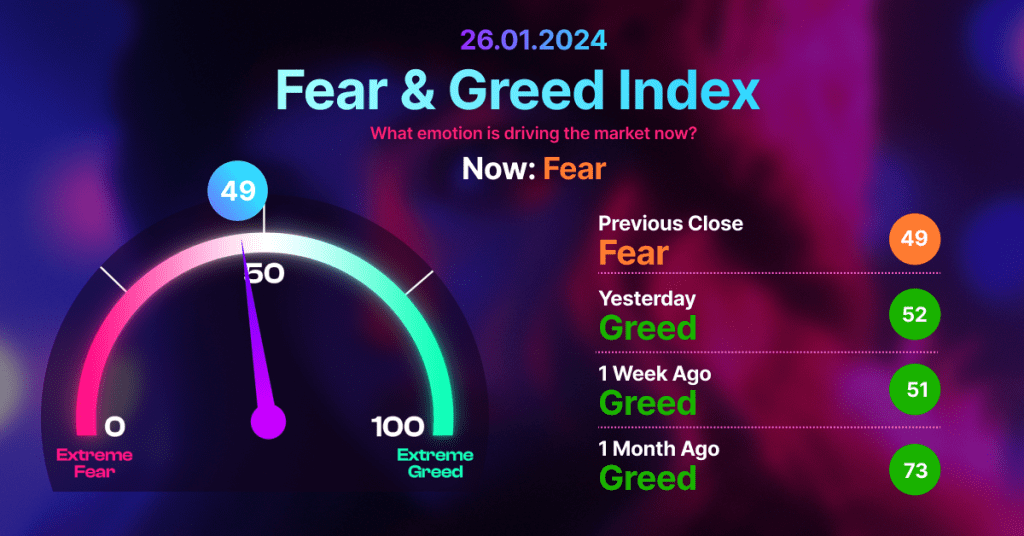JPMorgan Predicts GBTC Sell-Off “Behind Us” as Bitcoin ETFs Experience Record Net Outflow; US Government’s $118 Million Bitcoin Sale Considered Insignificant Compared to GBTC Outflows; Crypto and AI Energy Consumption Expected to Increase Over 30% by 2026
JPMorgan analysts suggest that the bulk of profit-taking from the Grayscale Bitcoin Trust (GBTC) is likely over, potentially relieving pressure on Bitcoin prices. The analysts, led by Managing Director Nikolaos Panigirtzoglou, state that most of the downward pressure on Bitcoin from GBTC-related selling should be in the past.
This observation comes as daily net outflows from U.S. spot Bitcoin exchange-traded funds (ETFs) reached a record high on their ninth day of trading. JPMorgan attributes GBTC’s $4.3 billion outflows since its conversion to an ETF on January 11 to profit-taking from previous GBTC investments, contributing to Bitcoin’s nearly 20% price drop to under $40,000 since the launch of multiple U.S. Bitcoin ETFs.
The note from JPMorgan follows a day with the largest net outflow for the ten approved spot Bitcoin ETFs, amounting to $158 million on January 24, as reported by BitMEX research. Grayscale’s ETF saw $429 million in outflows on the same day, with the most recent data for January 25 indicating a decrease to $394 million, marking its second-lowest outflow day on record.
Data for January 24, compiled by X account CC15Capital, shows a collective drop of 4,610 BTC (approximately $184 million) in Bitcoin ETF holdings held by all ten funds. JPMorgan analysts view BlackRock and Fidelity’s spot Bitcoin ETFs as “emerging competitors” to GBTC, with assets under management of $1.9 billion and $1.8 billion, respectively.
While BlackRock’s spot Bitcoin ETF experienced its lowest inflow since launch on January 24, adding $66.2 million on the day, its Bitcoin holdings increased by 1,663 BTC to nearly 45,700 BTC. Fidelity’s ETF added 3,170 BTC on the same day, bringing its total to 41,319 BTC.
US Government’s $118 Million Bitcoin Sale Considered Insignificant Compared to GBTC Outflows
The planned sale of nearly $118 million in seized Silk Road Bitcoin by the United States government is viewed as inconsequential by market commentators. The government’s intention to dispose of 2,934 BTC following the sentencing of Silk Road Xanax dealer Ryan Farace and his father Joseph Farace has sparked concerns in the community. However, many argue that the sale is “peanuts” compared to the outflows from the Grayscale Bitcoin Trust (GBTC) over the last week.
Since converting to a spot Bitcoin exchange-traded fund on January 11, GBTC has sold 106,575 BTC, worth $4.2 billion. The latest outflow was 10,871 BTC on January 24. The US government’s planned sale represents just 1.5% of the total estimated 194,188 BTC or $7.7 billion it holds from three seizures in criminal cases. This amount is still less than 1% of Bitcoin’s circulating supply.
The three Bitcoin hauls and sales by the US government are as follows:
1. 94,643 BTC seized in January 2022 from the 2016 Bitfinex hack.
2. 69,369 BTC seized in November 2020 from the Silk Road.
3. 51,326 BTC seized from Silk Road hacker James Zhong.
Around 41,000 BTC were planned to be offloaded in four sales in 2023. The government has previously auctioned Bitcoin, with the most notable example being the 2014 purchase by venture capitalist Tim Draper, who acquired nearly 30,000 BTC in an auction. In recent times, the government has opted to sell seized crypto on exchanges rather than through auctions, with the last known sale of 9,118 BTC taking place in March 2023.
Crypto and AI Energy Consumption Expected to Increase Over 30% by 2026
The International Energy Agency (IEA) predicts significant shifts in energy usage for cryptocurrency mining and artificial intelligence (AI) in the coming years. The IEA’s 2024 report forecasts energy usage through 2026 and notes that the power generation sector is leading the transition to net-zero emissions. While renewables are expected to become the primary sources of power in 2025, overall energy consumption is projected to rise to 3.4% through 2026, with China and India being major contributors.
Energy consumption by data centers, AI, and crypto is expected to more than double, exceeding 1,000 terawatt-hours (TWh). AI is set to lead this increase, with its power consumption anticipated to grow tenfold between 2023 and 2026. The report highlights that ChatGPT alone is expected to consume almost 10 TWh per year in that period. This surge in energy use puts crypto and related activities on par with the consumption level of Japan.
Bitcoin, which consumed 120 TWh in 2023, is a significant contributor to cryptocurrency mining’s overall energy usage, which totaled 130 TWh. The IEA predicts that crypto mining will use 160 TWh by 2026. Despite concerns about energy consumption, Bitcoin mining is reported to use 54.5% sustainable energy. As mining activity increases in anticipation of the Bitcoin halving, many miners are investing heavily in new equipment.



